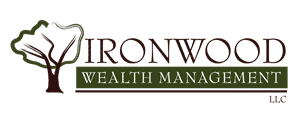You’ve heard not to put all your eggs in one basket, but that’s exactly what you’re doing if your investing strategy doesn’t involve a variety of investment types. Here’s a closer look at how to build a diversified portfolio for increased long-term success.
What’s the point of diversification?
Investing comes with inherent risks along with the potential for great returns. Spreading your investment dollars across a variety of investment types and asset classes helps you manage and hedge against risk, while also helping you maximize your returns. While neither of these — mitigating risk and improving returns — can ever be guaranteed, diversification does offer the potential to improve your returns for whatever risk level you target.
Every market has its strengths and its risks. The stock market, for one, has a history of high returns over long-term investment periods, but is also known for its potential toward volatility at times. The bond market, on the other hand, has a history of stability, but with that stability comes less potential for big returns.
Therefore, a mix of both types (and even more asset classes) is the ideal for many investors in order to limit losses and capture gains through market ups and downs.
What does a diversified portfolio look like?
In addition to dividing your funds across different asset classes like stocks, bonds, and other securities, you can also diversify within those classes. For example, rather than investing in a single type of bond, you might invest in domestic corporate bonds and government bonds.
The same goes for stocks. Rather than investing entirely in large cap domestic stocks (such as Amazon, Walmart, and Starbucks), you might also invest in small or mid cap stocks (like AMC Entertainment Holdings Inc. or Rite Aid Corp., to name a couple of the more well-known ones).
To take diversification even further, you might incorporate some real estate investment trusts (REITs) into your portfolio, along with some commodities exposure, and even some cash investments.
The overarching idea is to spread your wealth across a very strategic mix of high return, high risk investments, and lower return, lower risk investments.
Here’s a simplified, sample breakdown of what a diversified portfolio might look like (what yours could look like will depend on a number of factors):
- Large cap domestic stocks: 20%
- Small/mid cap domestic stocks:15%
- Domestic corporate bonds: 15%
- Government bonds: 10%
- Real estate: 10%
- Hedge Funds 10%
- International stocks: 8%
- Commodities 5%
- Emerging market stocks: 4%
- Cash: 3%
How to build the right diversified portfolio for you
TALK TO YOUR WEALTH ADVISOR
The mix of asset classes that’s best for your situation will depend almost entirely on your financial plan, which will take into account your capacity, risk tolerance and time horizon. While super savvy and experienced investors can manage this on their own, others can greatly benefit from involving their financial advisor. In addition, having an advisor involved helps keep you disciplined and on track.
FOCUS ON BUILDING YOUR PORTFOLIO
Contributing regularly to your investment portfolio is important for increasing your bottom line. As you have more to invest, consider adding new assets to your portfolio.
DON’T BE OVER CONCENTRATED IN ANY ONE AREA
In other words, no one stock or even stock type should make up a large part of your portfolio. Diversify across stocks by market cap, sectors, and geography. When it comes to bonds, diversify across maturities, credit qualities and durations.
KEEP THE NUMBER OF INVESTMENTS MANAGEABLE
Although investing in a variety of asset classes is important, so is keeping things as manageable as possible.
BE SURE TO WATCH THE FEES
Investing doesn’t come without some costs, and you need to keep an eye on what you’re paying and evaluate which fees or commissions make sense within your plan.
MONITOR AND MANAGE
Routine maintenance leads to better performance. Along with your wealth advisor, you should review your portfolio mix regularly and rebalance as needed.





